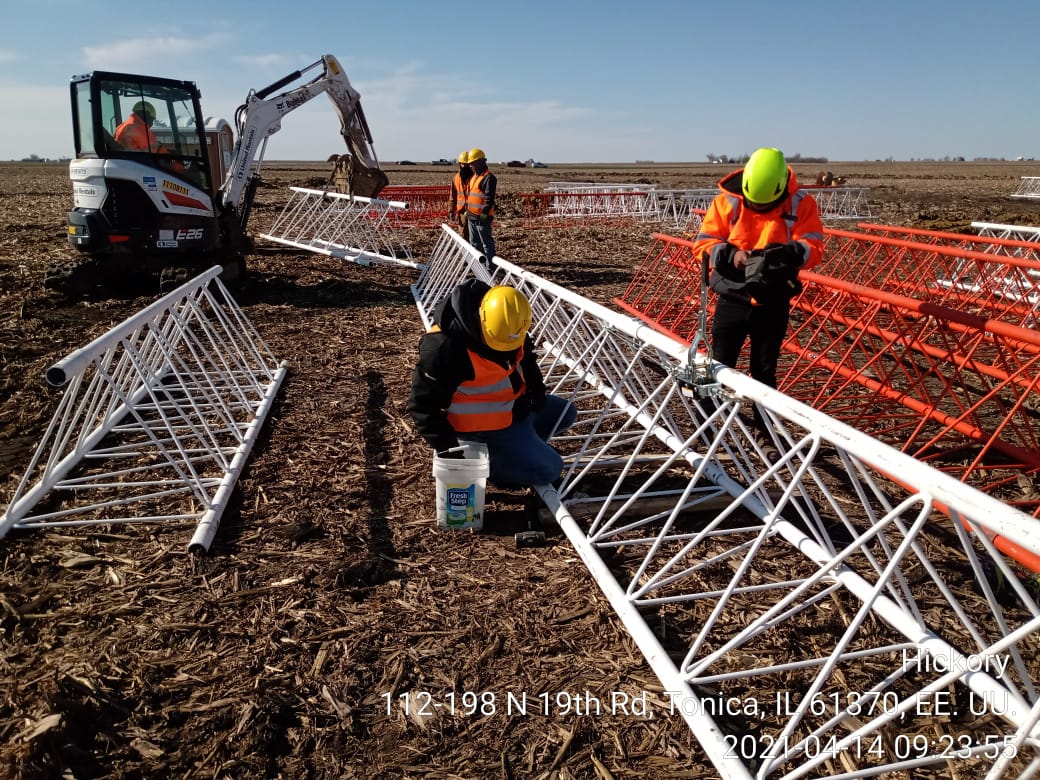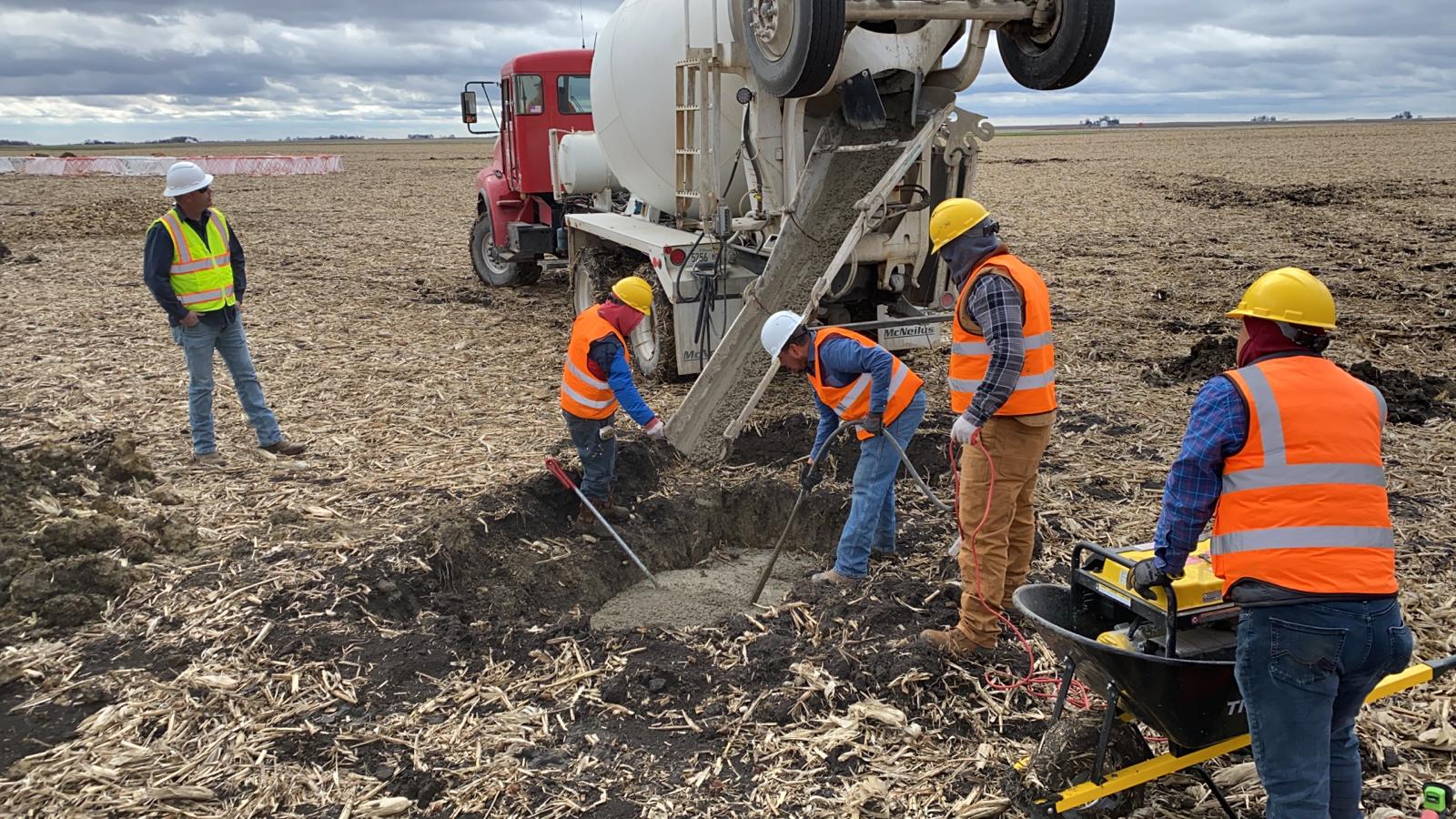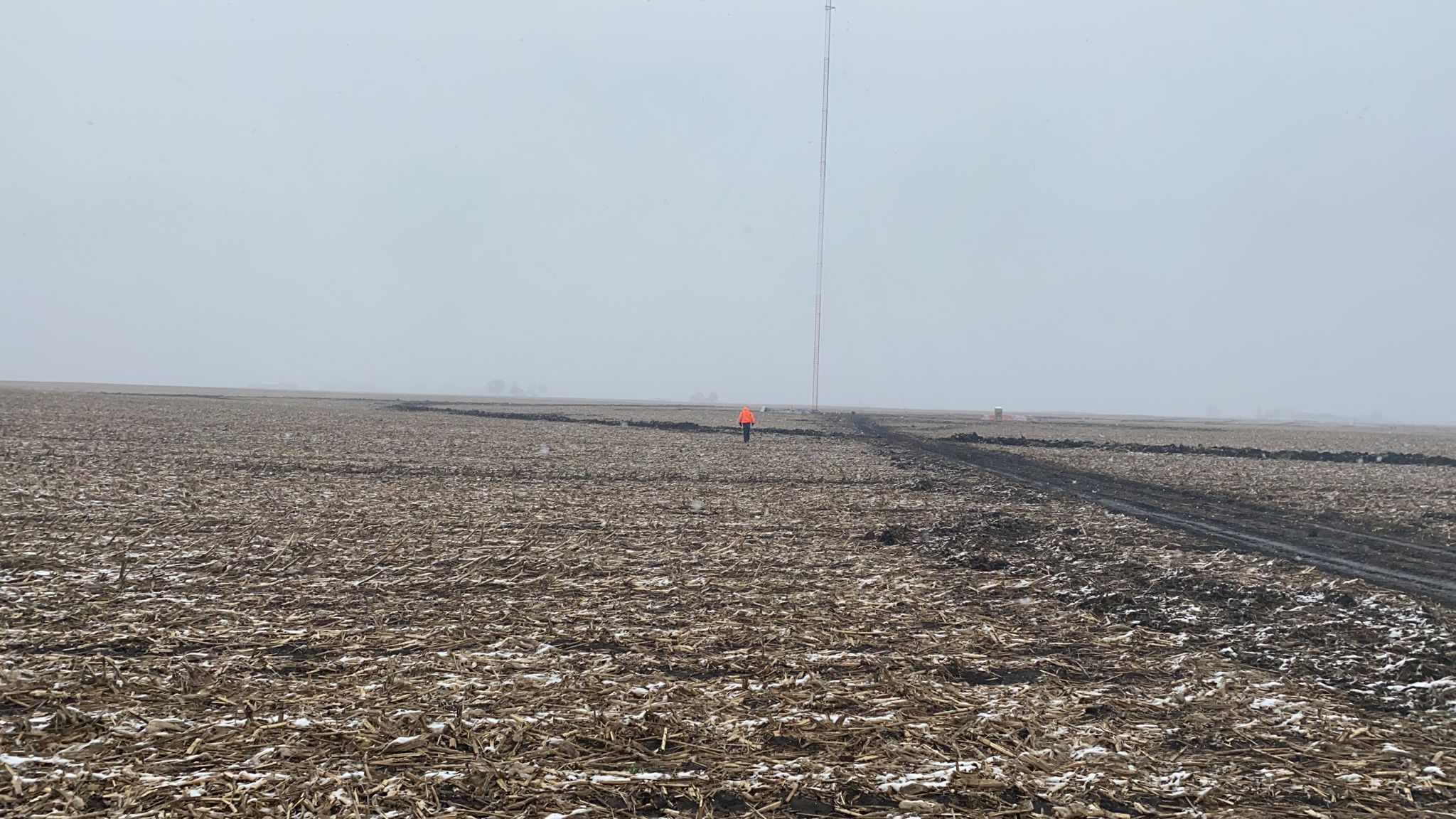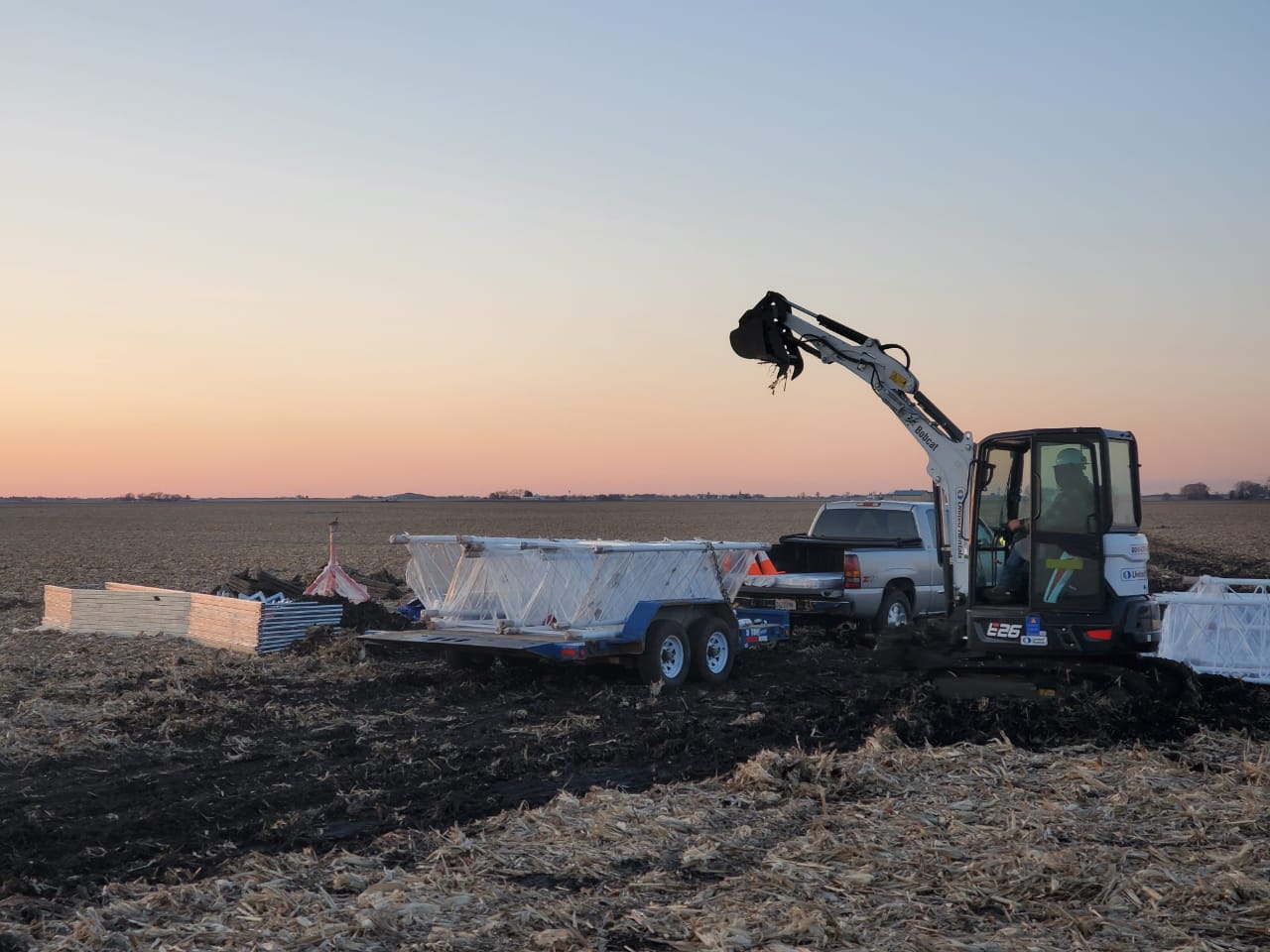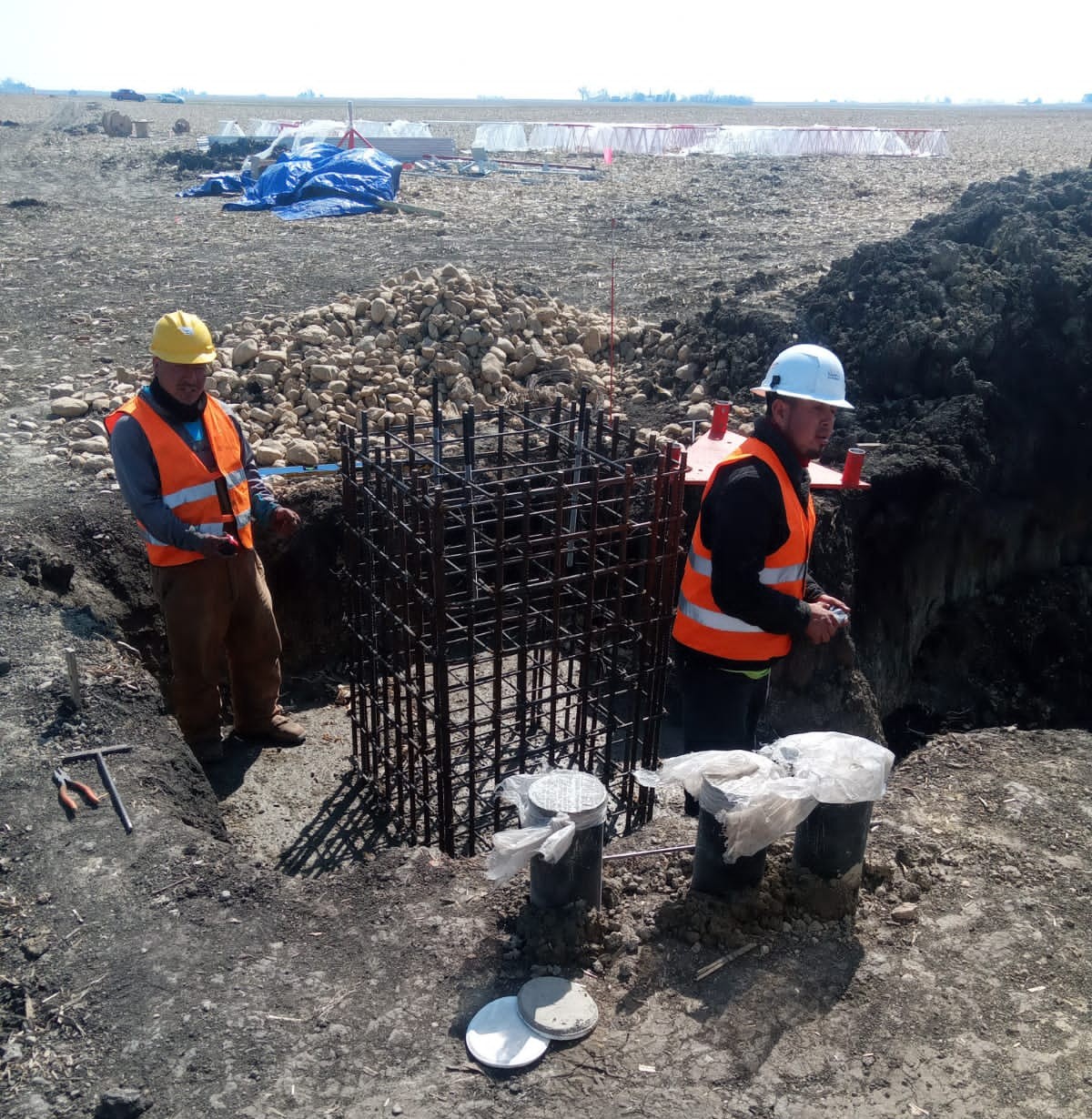Weather Tower for La Salle Wind Farm, Illinois, USA
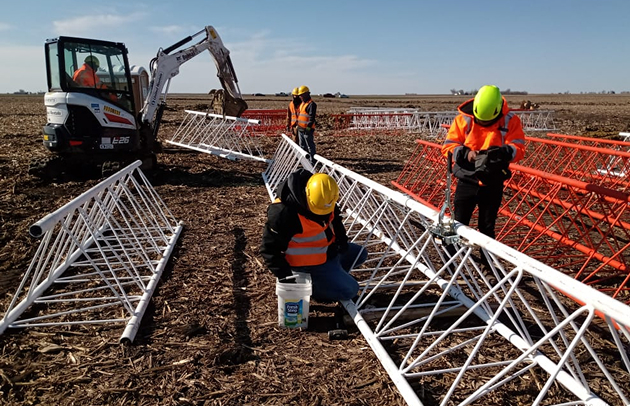
Description
Tower Type: Model TZ-90 braced triangular lattice tower
Total height: 160 meters
Other information:
- The project site has a magnetic declination of 2.78° W.
- The tower is triangular in section and has a hot-dip galvanized coating.
- The tower is powered by three 410W photovoltaic panels and 12 12V batteries with a capacity of 20Ah.
Type of Service
Installation of a wind mast (braced weather tower)
Date
May 2021
General Data
La Salle, Illinois, USA • 2021
Instrumentation
- 8 Thies anemometers
located at heights from 60m to 160m.
- 1 Young Vertical Anemometer – 27106T
at 156m.
- 4 First Class Wind Vanes
installed in four heights between 56m and 155.3m.
- 2 KPC 1.S/5-ME Temperature Sensors
at 155m and 10m.
- 2 KPC 1.S/5-ME Relative Humidity Sensors
at 155m and 10m.
- 1 AB60 Atmospheric Pressure Sensor
at 155m.
- Obstruction Lights
at 155m and 85m◦
- 1 Franklin Lightning Rod
at 160m.
- 1 SM3BAT Bat Detector
with microphone at 40m and data logger at 2m.
- Data logger Ammonit Meteo-40M
located at a height of 2m.
Regulatory Compliance
Tower installation and instrumentation placement were performed in accordance with IEC 61400-12-1 Ed.2 and MEASNET recommendations. The assembled anemometers were calibrated and installed following these regulations
Certifications
DNV (Det Norske Veritas) reviewed the installation report, comparing its contents with the photos provided and the parameters programmed into the data logger.
